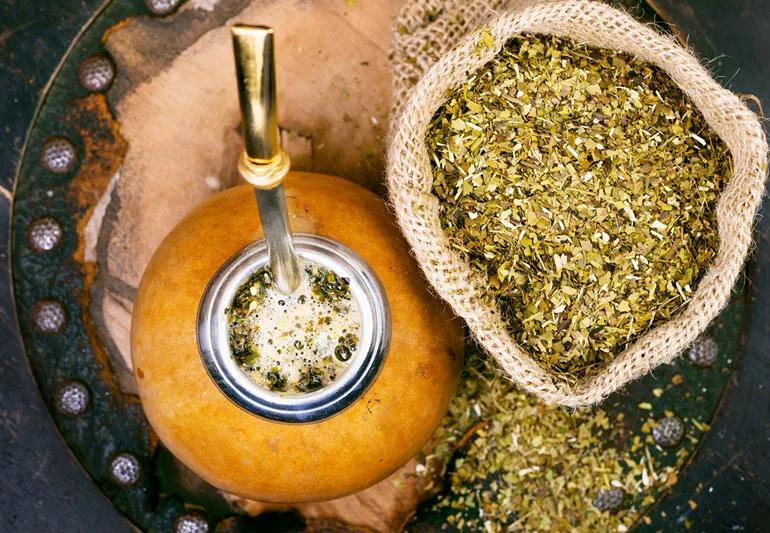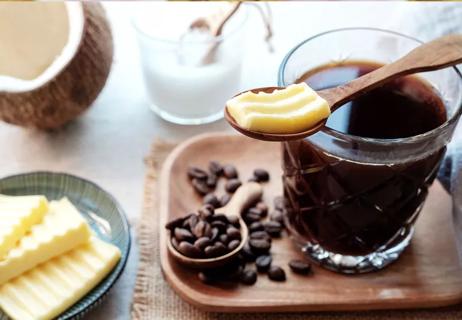Dare to be different with mushroom coffee, matcha tea or even golden milk

Not everyone drinks coffee. In this caffeine-crazed world, it seems 1 out of 4 people can somehow function without that morning jolt of java. (Seriously, it’s true! Researchers even verified it!)
Advertisement
Cleveland Clinic is a non-profit academic medical center. Advertising on our site helps support our mission. We do not endorse non-Cleveland Clinic products or services. Policy
All kidding aside, there are valid reasons for not leaning on the coffee bean at sunrise and throughout the day. Perhaps the caffeine gives you jitters or bumps your blood pressure into a danger zone. Or maybe the drink upsets your tummy.
It’s even possible that you don’t like the taste of coffee or — gasp! — just want to try something different.
Whatever the rationale, there are beverages that serve nicely as coffee alternatives. Let’s look through some tasty, trendy and interesting options with registered dietitian Beth Czerwony, RD, LD.
Chicory stands as the OG when it comes to coffee substitutes. (That’s a trendy way of saying it’s an old-school alternative that dates back hundreds of years.)
Chicory coffee is made from the ground-up roots of the chicory plant, a blue-flowered herb that’s part of the dandelion family. It’s brewed just like traditional coffee and offers a similar bitter taste.
But the big difference from coffee is that chicory coffee doesn’t have any caffeine: “If you’re sensitive to caffeine or want to cut back, that makes chicory a really nice alternative,” says Czerwony.
Chicory also checks a few boxes on the positive side of the health ledger by:
Advertisement
But no food is perfect, right? It seems that the inulin that revs up digestion may lead to gas and belly bloating. And you may be more prone to issues with chicory if you’re bothered by ragweed or pollen, cautions Czerwony.
Chicory also isn’t recommended if you’re pregnant (too much chicory could cause a miscarriage) or breastfeeding (chestfeeding).
If you want to tone down the caffeine-packed KA-POW in your coffee, the trendy “mushroom coffee” may be the answer. It’s basically just regular ground coffee blended with dried and milled mushroom powder.
Mushrooms are regarded as nutritional powerhouses — and rightfully so. But he jury is out on whether the fungi are equally good to drink.
“There’s not much research backing claims that mushroom coffee delivers the same nutritional value as eating whole mushrooms,” notes Czerwony. “It doesn’t appear that the hype is based on many facts.”
Mushrooms (and mushroom coffee) also can lead to digestive issues, especially if you already have kidney problems or trouble eating grains.
Coffee or tea? This age-old question pits two of the world’s most popular drinks against each other. (It’s also the inspiration for numerous online personality quizzes.)
Here are a few types of teas to consider if you’re looking to stray away from coffee:
“Vibrant” barely begins to describe the appearance of matcha tea, a unique green tea that is VERY green in color.
This highly concentrated tea is made from finely powdered green tea leaves spooned into hot water or milk. “Basically, you’re drinking down the whole leaf in a pulverized form,” explains Czerwony.
Matcha is higher in caffeine than regular green tea, but typically brings a lower buzz factor than coffee. (But there are “high-energy” matchas that are loaded with caffeine.)
The tea drink is packed with body-boosting antioxidants and micronutrients, too. Matcha has grown in popularity in recent years but has been widely used and enjoyed in Asian cultures since ancient times.
Want the caffeine of coffee without drinking coffee? Then, let us introduce you to yerba mate, a robust herbal tea made from the dried leaves of a South American holly tree.
The caffeine content in a cup of yerba mate tea is comparable to what’s in a cup of coffee. Brew the tea longer and the caffeine count can grow even higher, too. (And like matcha, there are high-energy yerba mate products in the market.)
Yerba mate boasts an impressive list of vitamins and nutrients, and it includes antioxidants.
Advertisement
One word of caution, though: Drinking mass amounts of yerba mate has been linked to increased risk of certain cancers, so it’s best enjoyed in moderation.
Spicing up your morning routine may be as easy as adding in a cup of chai tea.
Chai is typically a blend of black tea and aromatic spices such as cinnamon, ginger, cardamom and clove. It offers about half the caffeine as coffee, so it’ll provide a little kick to get you going at sunrise.
And stop if you’ve heard this one before about teas, but chai also includes antioxidants.
After more than 2,000 years of consumption, it seems kombucha is suddenly the world’s “new” beverage of choice.
The fermented drink’s branding as a health elixir has sent sales soaring over the past decade. Many of the health claims center on “healthy little microbes” in kombucha that develop during the fermentation process.
“There are a lot of claims about the benefits of kombucha, but a lot of them are anecdotal,” says Czerwony. “There’s not a lot of research backing it up.”
And if you do drink kombucha, it’s best to go easy. Drinking too much can lead to headaches, nausea or GI (gastrointestinal) distress. The U.S. Centers for Disease Control and Prevention (CDC) advises that drinking approximately 4 ounces of kombucha per day “may not cause adverse effects in healthy people.”
Advertisement
This list could be seemingly endless if we cited every available tea. But if you’re curious about other tea varieties, Czerwony offers a go-to list of healthy teas in this article.
A comforting warm-you-up morning drink doesn’t get more basic than a mug of hot water — and there are definite benefits.
“Most of us are a little dehydrated first thing in the morning because we haven’t had anything to drink in eight hours,” says Czerwony. “Plus, we all need water — and most of us don’t drink enough of it during the day.”
The warmth of a steaming mug of water brings another perk, too: “Warm liquids go through your system a bit faster,” explains Czerwony. “So, it’ll help get things moving through your GI tract.”
Plus, water is calorie- and caffeine-free!
Golden milk is the new golden child of the clean-eating movement. Turmeric stars in this warm and savory drink that’s all the rage at the moment while being hailed for its anti-inflammatory powers.
Milk or a nondairy alternative serves as the foundation of golden milk. After that, it’s all about adding spices such as ginger, black pepper, vanilla and whatever else your tastebuds might crave.
The drink is caffeine-free, too.
(Curious about this concoction? Check out this recipe for almond gold milk with apricots and cinnamon!)
Advertisement
If you really want to get away from coffee or coffee-like drinks, dust off your blender and make a smoothie, suggests Czerwony. The filling drink can be loaded with fruits, veggies, protein and whatever spices you desire.
It’s even possible to add a caffeine kick by including matcha powder, yerba mate or some other brewed tea. (Learn how to blend the perfect smoothie with these tips and recipes.)
Despite what many coffee drinkers may believe, there’s no ONE perfect drink to start your day.
“You shouldn’t be dependent on any single thing,” encourages Czerwony. “Just reaching for coffee day after day after day is limiting. There are a lot of different options. If you want to get ‘boujee’ or fancy, do it! Experiment a little and have some fun.”
Learn more about our editorial process.
Advertisement

Morning, noon or night — the best time for that cup of joe depends on you

Coffee is better (and safer) ingested than injected

‘Butter coffee’ is super high in calories and saturated fats with almost no nutrients

A moderate amount of coffee can lower your risk for several chronic diseases

Acids in coffee can give you the urge to go in just minutes

Find out how coffee affects liver health — and how much you should be drinking

A great, caffeine-free way to start your morning!

Type 2 diabetes isn’t inevitable with these dietary changes

Applying a hot or cold compress can help with pain